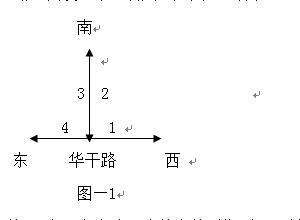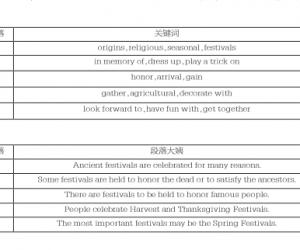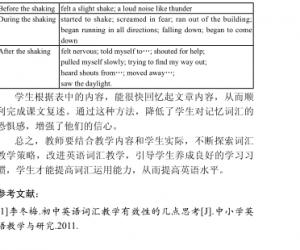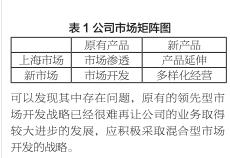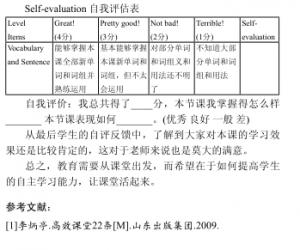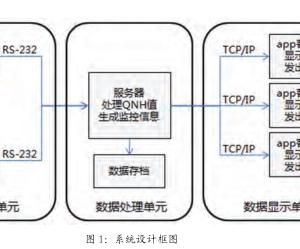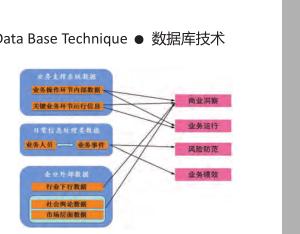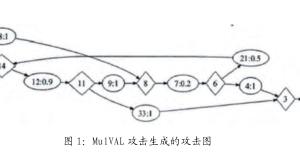以《鬼佬》为案例研究纪录片的字幕翻译
收藏
打印
发给朋友
发布者:lunwenchina
热度0票 浏览149次
时间:2019年12月17日 09:50
江苏海事职业技术学院/刘健
【摘要】 对于一个制作纪录片的人来讲,当该片涉及到不同的语言文化,为达到呈现事实的目的,字幕是至关重要的。
本文通过对字幕翻译的目的、观众的接受度以及字幕翻译方法的探讨,结合纪录片《鬼佬》做案例,研究了跨文化纪录片字幕翻译中的技巧和文化因素对其造成的影响。
【关键词】 字幕翻译 纪录片 跨文化
【Abstract】 For any documentary maker that seeks to producea film involving a different culture and language, in order torepresent reality, subtitles are of upmost importance. This essayresearches the objective and the general methods of subtitling,as well as the acceptance of the audience. By taking Ghosts asan example, it studies the techniques of subtitling and the transcultural influence on the progress of writing subtitles.
【Key words】 subtitles; documentary; trans-cultural studiesThe thesis deposited in this essay is that in order to representreality, when a documentary involves a different culture andlanguage, such as Ghosts, subtitles cannot be neglected.
1. Theories about Subtitles
1.1 Objective, Reception and Requirements
According to Linde and Kay, for interlingual subtitling,“the objective is to achieve something approaching translationequivalence” (1999: 2). However, the essential differencesbetween spoken and written language can not be ignored.
Generally speaking, “All subtitled programmes are madeup of three main components: the spoken word, the imageand subtitles” (Cintas & Remeal, 2010: 9). “When spokendiscourse is replaced by written discourse the structure of themedium is altered, changing the balance between oral andvisual channels. Screen images and linguistic discourse can nolonger be processed simultaneously, and this affects the way afilm is received” (Linde & Kay, 34). They explained furtherthat “Interlingual subtitles transfer the meaning of utteranceswhile relying on the remainder of the soundtrack, includingphonetic cues, to carry the full meaning of a film sequence”
(1). Therefore, for a subtitled film to be accepted by the audiencemore easily, some requirements of subtitles were given byGambier, which are the features of the key word “accessibility”
in screen translation: acceptability, legibility, readability,synchronicity, relevance, and domestication strategies (179).
Additionally, Linde and Kay put forward the notion of “dynamicintegrated environment” , whereby the subtitlers are expected toconsider fully that “each subtitle is realized within a particularaudio-visual context, styled according to the conventions ofspeech and writing, and edited with an eye on the structure ofa film and the reading characteristics of target viewers” (1).
To conclude, subtitlers should notice “[…] that the transfer ofdialogue into written captions is not a straight-forward matter oftranscribing a lexical sequence” (6).
1.2 Methods
As a matter of fact, in the process of subtitling, rewritingis so typical: “the dialogue has to be condensed, which inturn means selecting particular features of the source text to beomitted, by straight deletion or reductive paraphrasing” (Linde& Kay, 4). As to the reasons for this reduction, Cintas and Remaelexplained it both from the respect of viewers and restrictions ofsubtitles. Firstly, “Viewers/listeners can absorb speech morequickly than they can read, so subtitles must give them enoughtime to register and understand what is written at the bottom ofthe screen” (146). Meanwhile, they “must also watch the actionon screen and listen to the soundtrack, so they must be givensufficient time to combine reading with watching and listening”
(146). Secondly, “Subtitles are limited to a maximum of twolines. How much text they contain depends on the time available,the subtitling reading speed applied, and the speed at which theST is actually pronounced” (146).
In the process of reduction, there are two general practices:
elimination and reformulation. However, “Whether rephrasing oromission, or a combination of the two, is the best solution, mustbe ascertained in each instance” (149).
There are specific methods of condensation andreformulation. At word level, simplifying verbal periphrases;generalizing enumerations; using shorter expressions; usingsimple rather than compound tenses; and changing word classesare common practices (151). At the clause/sentence level,subtitlers have adopted the following approaches: changingnegations or questions into affirmative sentences or assertions;simplifying indicators of modality; turning direct speech intoindirect speech; changing the subject of a sentence or phrase;turning compound sentences into simple sentences, activesentences into passive or vice versa; using pronouns, and so on(154).
As for omissions, this method usually goes hand in hand withreformulation. The prerequisite of omitting is that it will not affectthe understanding of the audience towards the messages the film would like to convey.
Furthermore, to do a better subtitling work, the subtitlers arerequired to have a good knowledge of both the source and targetlanguages and cultures.
2. Case Study
2.1 Deficiencies
Taking the subtitles in Ghosts as an example, admittedly,thecommunication is effective between the film and its westernviewers. However, there are deficiencies that some subtitledsentences make nonsense and can result in misunderstandingin the audience, which are mainly due to language and culturalfactors.
In the beginning, there is the conversation between AiQin and her parents in Fujian dialect, which is even hardlyunderstandable for any Chinese living outside Fujian province.
Although I do not understand the original Chinese version, I candetect there is at least one sentence subtitled inappropriately.
When Ai Qin told her parents that she wanted to go abroad tomake money, her mother’s response was subtitled as “I’ll cryif you go” . The English translation sounds weird. However, inChinese, there exists such an expression, which is usually usedto convey negative feelings like disappointment, desperation,and so on. The question is when subtitling this sentence thesubtitler adopted a literal translation that the subtitled versiondoes not appear to be a common expression in English. For“it is highly unlikely that any target language should have anidentical equivalent, and this is a problem most dialects pose. Theconnotations of different target culture dialects will never be thesame as those of the source culture dialects they replace” (191).
In this particular circumstance, the subtitler should have translatedthe connotations overtly instead of confusing the English viewers.
Therefore, a rewritten version “I’ll be heart-broken if you go”
turns out to be preferable.
There is another problem which concerns omissions.
Taking the audience’s reception into account, they “may feeluncomfortable if no subtitles appear while characters are stilltalking on the screen” (Gambier, 2003: 178). Regarding theconversations in Fujian dialect, I assume the role of a foreignviewer and as such depend on the subtitles to understand thecontents, but I feel uncomfortable because it seems the charactersspoke rapidly and a lot, but the subtitles turn out to be shortand simple, and there are blanks. This problem also appears inother parts of the film, where the dialogues are in Mandarin. Inthese circumstances, I can compare the original ones with thesubtitles and detect the deficiencies. For example, when the filmhas progressed for about an hour, Mr. Lin asks Ai Qin to go tohis room and talks to her, “我有很多朋友在伦敦,开了按摩院。他们那儿生意特别特别大。有好多女孩都在那儿做。怎么样?我给你介绍到那儿去。那儿挣钱多,你还债会很快的” . If translating sentence by sentence, the subtitlesshould be like “I have friends in London. They run a massageplace. The business is big and successful. Lots of girls workthere. How about working there? I can introduce you to them.
You could make much money and pay your debt quickly” .
However, the subtitles were reduced to “I have friends inLondon. They run a massage place. Lots of girls work there.
You could pay your debt quickly” . There is no problem withthe first three sentences, but the last one seems less logical forit appears to have little relationship with the previous contents.
As Linde and Kay indicated “even slight omissions can causea significant change in meaning” (28), the subtitlers should bediscreet when dealing with omissions that they are expected totake text cohesion into consideration. The cohesive devices thatgenerally adopted are concluded into four principal types, whichare referential cohesion, substitution and ellipsis, conjunction, andlexical cohesion (28). In the above example, as Mr. Lin speaksat a low rate of speed, it is thus allowed by spatial and temporalrestrictions to translate all the sentences. Additionally, by insertingsome cohesive elements and reformulation, the subtitles couldbe more acceptable. A suggesting version is “I have friends inLondon. They run a message place, which is big and successful.
Lots of girls work there. How about I introduce you to them? Youcan make much money and thus pay your debt quickly” .
2.2 Satisfying Subtitles
Besides these imperfections, it cannot be denied that there aresome excellent subtitles in this film, for instance, the translation ofidiolects and songs.
Take the subtitles of Mr. Lin’s words as an example. Mr.
Lin speaks with obvious individual stylistic features, whichcan be attributed to his Northern Chinese speaking habit, thatit is peppered with taboo words and swearwords. For “Thetranslation of taboo words and swearwords is crucial when theycontribute to characterization or when they fulfill a thematicfunction in a film” (Cintas & Remael, 197), “Subtitlers musttherefore first identify and evaluate the impact and emotionalvalue of a given word or expression in the source culture, andthen translate it into a target culture equivalent that is deemedappropriate in the context” (196). Therefore, such subtitledwords and expressions as “fucking” “fuck off” appearsfrequently to match their Chinese equivalent “他妈的” , “滚蛋” , and so on.
Another feature of this documentary is the Chinese songs it contains. It can be detected that these songs are added to thefilm for specific purposes. Although not all the songs appearingin the film need to be subtitled, those that “actually constitutethe essence of a film” (208) and others that “contribute to thestory in a more indirect sense, by suggesting a mood or creatingan atmosphere” (209) should be given special attention andare expected to be subtitled in most circumstances. As to how totranslate songs, Cintas and Remael gave instructions that “threeissues must basically be weighed up against each other: content,rhythm, and rhyme” (211). The two songs hummed by Mr. Linwhen he picked up Ai Qin were Don't Pick the Wildflowers onthe Roadside and The Moon Represents My Heart. The subtitledsentences are “There are some wild flowers on the road. Youmustn’t take them. You mustn’t take them” and “Anotherkiss and my heart trembles. You ask me how much I love you”
respectively. The subtitles are interesting and expressive. Theyreflect the personality of Mr. Lin, who always does not take thingstoo seriously and remains optimistic. The two songs sound a bitflirting. But Mr. Lin who sang them to Ai Qin might just want tomake a joke and ease Ai Qin’s nervousness and scary feelings.
2.3 The Missing Subtitles
It is noticeable that the song The Moon Represents My Heartappeared twice more in the following sequences but withoutsubtitles. It is acceptable for it has already been subtitled at thefirst instance and the audience can recognize it to be a romanticlove song. But another song called Sweet Smile, which shouldhave had subtitles to indicate the mood, was not subtitled. Thissong appeared when they worked on the apple farm, which mightbe the happiest scene in the film, in contrast to the followinghorrible accident. It is not necessary to translate accurately, but afree translation should be done to render the atmospheric qualityof the lyrics (211). Also another song named I Love Snowfallbeyond the Great Wall is not given any subtitles. In this case,they were on their way north to go cockling, but still did not loseconfidence in life. This song is inserted here to indicate the upnorth direction that they go and to express the appreciation forthe beautiful scenery found in the north. But the English viewersare highly unlikely to know this Chinese song that they wouldbe confused as to why this new song has been placed here as thebackground music. Maybe it would have been more proper forthere being subtitles to indicate the content of the song. Besides,in the beginning of the film, Ai Qin sang a song called Mum isthe Best in the World when bringing her son to the kindergarten,which emphasized her deep maternal love towards her son.
However, there are no subtitles. Although nearly every Chineseknows this song and can sing it, the English viewers may not beaware of it. Like Sweet Smile, an accurate translation might notbe required in this case, but since feelings of love, and tendernessshould be expressed, there should have been some free translationto convey the atmosphere.
3. Conclusion
In summary, when a documentary involves a differentlanguage and culture, in order to represent reality, subtitles areof great importance. The features and basic requirements ofsubtitles should be taken into account. Moreover, the subtitlersare expected to have a good command of not only the sourcelanguage and culture, but also the target ones. Bearing thelanguage and cultural factors in mind, it can be found that thesubtitles of the Fujian dialect in Ghosts appear to be problematic.
In the practice of subtitling, two general approaches, i.e. reductionand reformulation, and omissions, are frequently adopted. Butthere are inherent risks by doing this, which is analyzed byexamining examples in Ghosts. Furthermore, considering thecharacteristics of the subtitles of this documentary, anothertwo points concerning subtitling have been discussed, namely,translation of taboo words and swearwords, and translation ofsongs. In the end, the three main factors that can influence thetransformation of dialogues into subtitles should be taken intoconsideration all the time: “captions must integrate with theexisting material and semiotic structure of a film; speech has tobe presented in an altered written mode and subtitles must bedesigned so as to take account of viewers’ reading capacities”
(Linde & Kay, 26).
However, the discussions in this essay are just preliminaryin scope. Screen translation is a field yet to be explored thatmany questions remain unanswered in this field and are worthinvestigating in future research projects. With the progress ofinvestigations in this field, it is believed that better methods canbe developed and thus bring the audience better subtitles.
References:
[1]Cintas,Jorge Díaz,and Aline Remael.AudiovisualTranslation:Subtitling.Ed.Dorothy Kelly[M].Manchester:St.
Jerome Publishing,2010.
[2]Ghosts.Dir.Nick Broomfield.Perf.Ai Qin Lin,Zhan Yu,and ZheWei.Tartan Video,2007.
[3]Gambier,Yves.“Introduction:Screen Translation:Perceptionand Reception.” Screen Translation.Ed.Mona Baker[M].
Manchester:St.Jerome Publishing,2003:171-189.
[4]Linde,Zoé de,and Neil Kay.The Semiotics of Subtitling[M].
Manchester:St.Jerome Publishing,1999.





